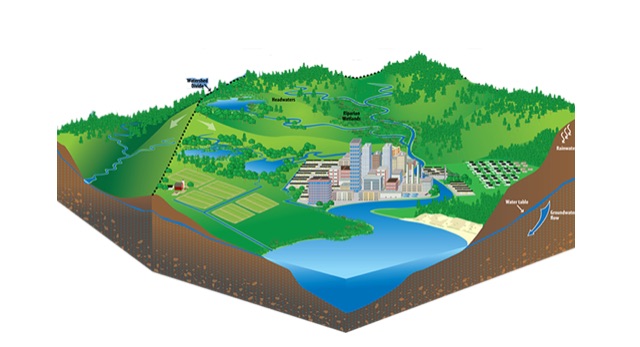Adaptation – Part IV

By Ranil Senanayake –December 20, 2016
Preparing for the future by looking back.
Understanding the issues and options before us.
Understanding the issues and options before us.
There is a need to reforest our mountains to ensure a robust watershed. This seems evident. However, when embarking on such action the questions that arise are: What kind of tree cover are we attempting to establish? What soils will be restored? What landscapes are we looking to create? As discussed before, all traditional development was on a watershed basis. The slowing of the downstream flow through a cascade of tanks is a prime example. Modern development too should pay attention to maintaining the integrity of watersheds.
Development planned on a watershed basis can lead to sustainable settlement. Now that it is evident that access to clean water is going to be a critical need, the retention of rainwater with the least amount of contamination should become an ideal. The most important source of clean freshwater is the aquifers. The aquifers are maintained by recharge by infiltration of rainwater. As an example if an area with 3 inches of rainfall is considered, .6 inches will leave the area as runoff, the rest percolates downward to replenish the aquifer (fig 1). As the amount of impervious surface increases through urban development, the contribution to the shallow aquifer drops to .5 inches. Thus planning for haphazard urban growth, without considering the landscape that it is in, can lead to a loss of water in the aquifer.
Carbon footprint of urbanization must also be computed as the carbon cost to the nation when reporting on our emissions. When every ton of concrete emits 800 kgs of CO2 and every ton of steel is responsible for 1.2 tons of CO2, just the construction of this infrastructure will be carbon expensive. When the ongoing need of energy for its maintenance is considered, urbanization should be approached rationally and not merely pushed by the greed of ‘developers’.

Fig 1. Rainwater infiltration rates as determined by different classes of land use
The following steps to urban development were proposed to the Megapolis Ministry, it is to be seen if rationality is expressed.
- Each urban center located and identified within a watershed.
- Each center will recognize the economic value of the ecosystem services supplied by their particular watershed
- The maximal sustainable yield of ecosystem services of each watershed will be the defining parameters of growth for each center
- Each center will strive to develop the primary production of that watershed to its highest value.
If such thinking is applied to the current national commitment to Sustainable Development Goals (SDG’s), rational landscapes that recognize watershed boundaries will result (fig 2.) Here each urban center is located and identified within a watershed.

Fig 2. Developing a sustainable landscape
As people living in urban centers look towards enjoying a healthy life, they can ensure such an outcome by investing in the rural sector to increase the ecosystem services that underlie a good quality of life. What are these services? The provision of clean air, the provision of clean water and the provision of clean food. The provision of clean air is made possible by the production of Oxygen, the removal of airborne particulate matter. The photosynthetic matter or the leaves of plants produce life-giving Oxygen as long as the sun shines. The leaves of plants give out a constant stream of moisture that settles dust and airborne pollutants. The provision of clean water is assured by two mechanisms one is the cleaning and release of water into the air through the evapotranspiration from leaves, the other is by the cleaning action of the soil ecosystems maintained by the roots of the forest. The leaves of plants also, sequester Carbon, make clouds, cool the ambient temperature and provide food. It is in the rural part of a watershed that a large volume of leaves can be maintained. The larger the volume of this green component, the chlorophyll the more ecosystem services that land produces.

